Department of Engineering and Communication
Open Project Day in the IWK department
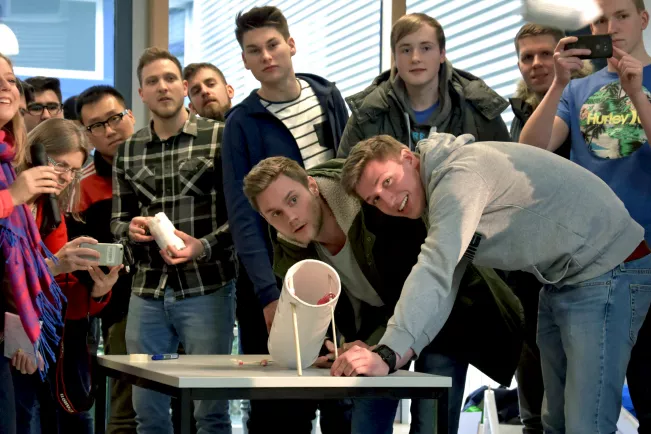
Practical experience is an essential part of the degree programme at Bonn-Rhein-Sieg University of Applied Sciences. In the four-one model, four weeks of theory are followed by a block week in which students apply what they have learnt in practice. At the centre of the block week is a semester project (limited to one semester) or a Bachelor's project (ongoing project), which the students have to work on independently during the block weeks

To present these projects, the Department of Engineering and Communication (IWK) invites all members of the university and the public to the Open Project Day on the last day of lectures of the semester. Students will demonstrate how the academic content can be implemented in practical and real-life projects. The Open Project Day also offers interested pupils the opportunity to visit Bonn-Rhein-Sieg University of Applied Sciences, make initial contacts and learn about the various study options
Next open project day
On Friday, 23 January. January 2026, open offers from 11 am to 2 pm
- Project presentations in the labs & in the Hochschulstraße of the IWK faculty (more information on the individual projects can be found below)
- At the same time, taster sessions will be held as part of the Study Information Day on the St. Augustin campus from 1 pm. Augustin campus from 1 p.m. Taster lectures from all departments of the Bonn-Rhein-Sieg University of Applied Sciences will take place.
Programme on the Open Project Day in the Department of IWK
Media projects (open offers from 11 am to 2 pm)
The following media projects will be presented by the Department of Engineering and Communication as part of the Open Project Day. For more information on the individual projects, open the drop-down menu by clicking on the respective entry
Room B001: Science Communication Aesthetics
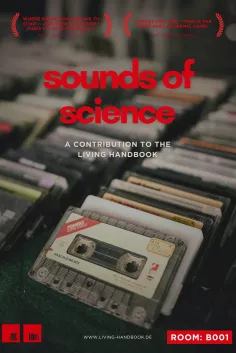
Under the title "Science Communication Aesthetics", a project is currently being developed in the Media Aesthetics Laboratory with students from the Master's degree programme in Digital Communication and Media Innovation. The aim is to develop media formats that convey "knowledge about science". The content aims to be integrated into the Living Handbook - the central transfer platform of the Rhine Ruhr Centre for Science Communication Research - and thus made available to a broad target group.
Contact person: Prof. Dr Oliver Ruf, Dr Andreas Sieß
Room B119: Eye tracking and usability
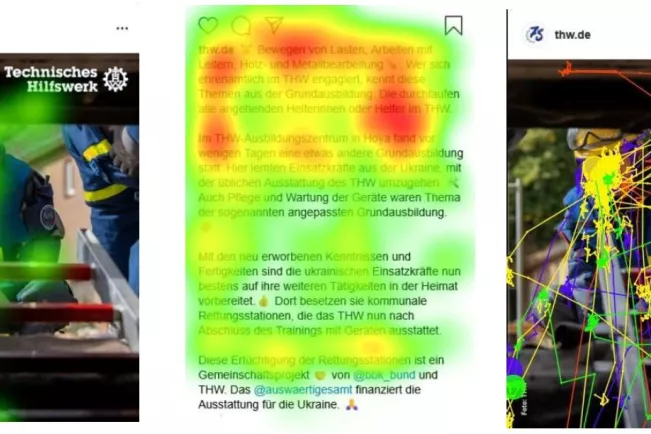
Eyetrackers can precisely record how people navigate a website and which elements they look at for how long. Eye tracking studies can therefore be used to improve the usability of websites. Recording eye movements also makes it possible to make statements about the perception and attention of test subjects.
Students from the Master's programme in Digital Communication and Media Innovation used the new eye trackers and Tobi's software to investigate, among other things, how important emojis are on Instagram, how sustainability labels are perceived on Amazon and how quickly amateur chefs find the recipes on the Haribo website. In B119, you can not only view the results, but also try out the eye trackers for yourself.
Contact persons: Prof. Dr Susanne Keil, Michael Malschützky
Room B126 (TV/radio studio): Media project 360° camera
Contact persons: Klaus Wache and Sabine Fricke
Room B126 (TV/radio studio): Media project advertising clips
Contact persons: Adnan Hodzic and Sabine Fricke
Room B127: Editorial office technikjournal

Whether AI, electromobility or the protection of whales: technology plays a role everywhere. In the technikjournal project, the participants simulate an editorial team and create multimedia articles and social media content on topics of their choice.
The works are published on the technology blog technikjournal.de and the associated social media channels.
Contact persons: Prof'in Dr. Katharina Seuser, Anestis Jordanidis
Engineering science projects (open offers from 11 am to 2 pm)
The following engineering science projects will be exhibited by the Department of Engineering and Communication as part of the Open Project Day. For more information on the individual projects, open the drop-down menu by clicking on the respective entry.
Demonstration from 11:00-11:30 a.m. in the Hochschulstraße: Diving boat challenge
In this project, students have to build a submersible that dives independently and resurfaces after a certain time. The control and power supply of the boat must be purely pneumatic. Electrical or other control systems or power supplies are not permitted.
Through this, they learn about the initial effects of fluid technology and should optimise these to such an extent that they build the best submersible and compete with their fellow students. Simple pneumatic components are available for this purpose, which are supplemented with other materials.
Contact person: Prof. Dr Sebastian Drumm
University road: BRS Motorsportteam
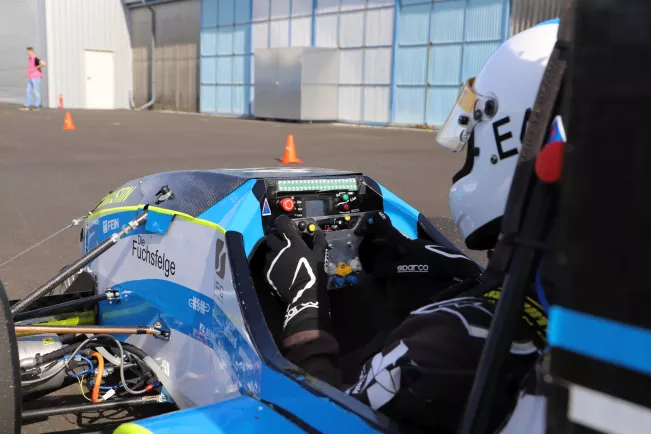
In the BRS motorsport team, students design their own racing car and compete in competitions. The students take care of everything from the electrics, chassis and drive to the software,
using specific examples such as optimised chassis and steering components, measurement and simulation projects and the development of a new dashboard controller, it becomes clear how many different disciplines are involved in the racing car.
Contact person: Prof. Dr Dirk Reith
Room B008: Smart Factory
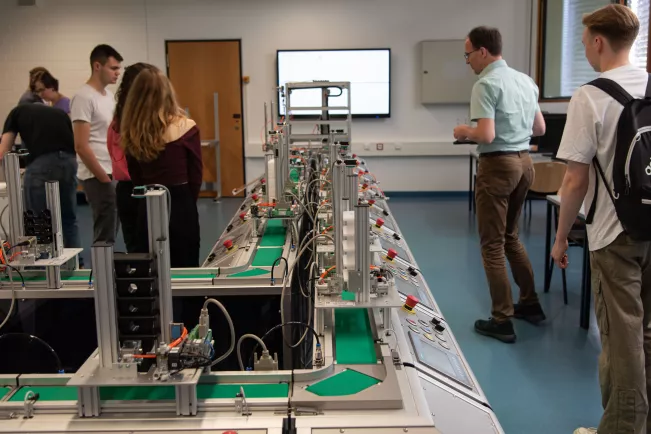
There is a demonstration of an automated production line. Come along and experience Industry 4.0 at first hand!
Contact person: Prof. Dr Ingo Groß
Room B008/B014: Application of industrial robots and mobile robots
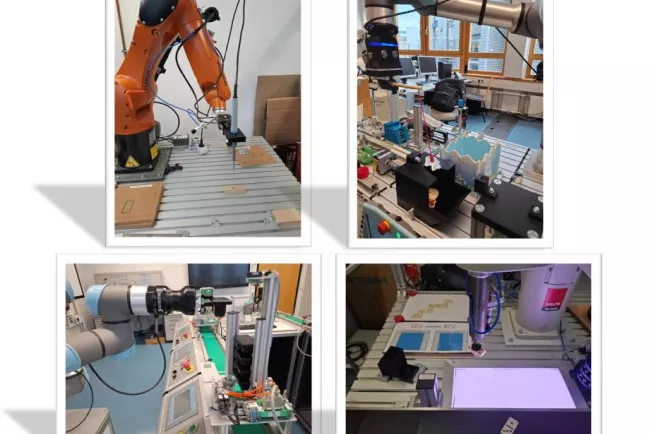
In this project, four industrial robots show what they can do:
- Burning engraving with KUKA robot
- Fishing game with collaborative robot
- Collaborative mobile robot sorts parts into the magazines of the "Smart Factory"
- Domino game by SCARA robot
Contact persons: Prof. Dr Sebastian Groß, Claudia Holbach
Room B021: Measuring with Arduino microcontrollers

In this project, measuring systems and also mechatronic systems are set up that use microsensors to measure various physical variables and control actuators. Measurement and
control is carried out using Arduino microcontrollers.
Concrete individual projects: Plant irrigation station, thermal camera, lung volume measuring device
Contact persons: Prof. Dr Josef Vollmer, Christoph Mauel
Room B038: Solar gadgets - A clever module for everyday life
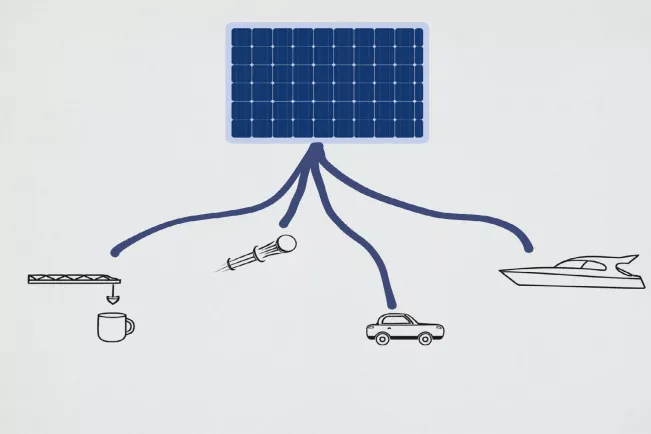
In our project, we are developing a compact device that runs entirely on solar energy, using as many existing components as possible to create a practical everyday helper or a useful tool
First, we collect creative ideas and then plan our structured approach step by step. In the end, we want to present a functional module that shows how easily solar energy can be used sensibly and sustainably.
Contact person: Prof. Dr Jürgen Apfelbeck
Room B038: Hydrogen demonstrator - experience hydrogen in action
Hydrogen is seen as the energy source of the future. But how does it actually work? This project makes it visible - from clean energy generation to practical application.
Contact person: Prof. Dr Tanja Clees
Room: B050 X-Y unit for EMC scanners
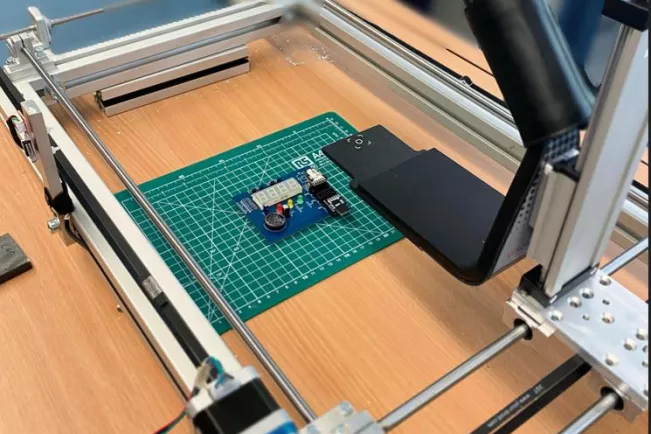
In the EMC laboratory, systems and printed circuit boards are analysed for electromagnetic radiation. To successfully suppress interference on a PCB, it is helpful to know the position of the greatest radiation. The X-Y unit can be used to automatically move a field sensor/measuring antenna in a fine grid. Stepper motors & position sensors ensure precise positioning. A scanphone is used as the measuring system, which can display the individual measured values in an "EMC map". The interference radiation becomes "visible", enabling the PCB to be optimised.
Scanphone
The Scanphone is a mobile measuring system for the rapid detection of electromagnetic fields. Interchangeable EM sensors and augmented reality allow measurement data to be superimposed on the camera image.
Project goals
- Precise and automatic EMC mapping of PCBs to localise sources of interference
- Detection of the position and height of the assembly/ PCB
Contact person: V. Geffel
Room B073: Materials laboratory
Live experiments from the materials lab | What can a material withstand and what does it actually have to withstand? | Sustainable materials in the project, what do you do? | What is materials science? Questions and answers for first-year students | Product and digital - component testing using 3D scanning
Contact persons: Prof. Dr Corinna Thomser, Juliane Karneboge
Raum B101: Holz-Kugelbahn
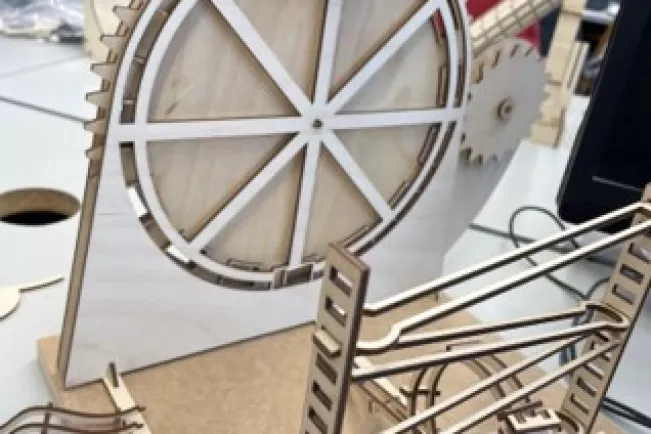
In diesem Projekt werden in Kleingruppen Holz-Kugelbahnen geplant, entworfen, in CAD umgesetzt und schließlich mit dem Holzlaser ausgelasert und zusammengebaut.
Ansprechperson: Sandra Himmel
Room B121: Engineers without Borders Challenge - Modular extension of a wind water pump
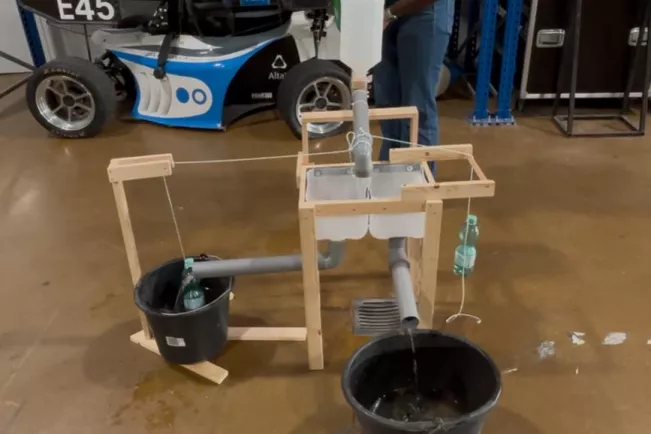
A wind water pump for use in Uganda is to be supplemented with a technical extension so that the system switches off automatically once a storage tank has been filled. This makes it possible, for example, to maintain supplies even on windless days without putting too much strain on the system or risking damage from overuse, such as flooding of fields.
The solution should be robust, easy to implement and adapted to the local conditions.
Contact persons: Corinna Ruppel, Florian Bahl, Prof. Dr Fabian Sommer
Room B150: Self-balancing robots
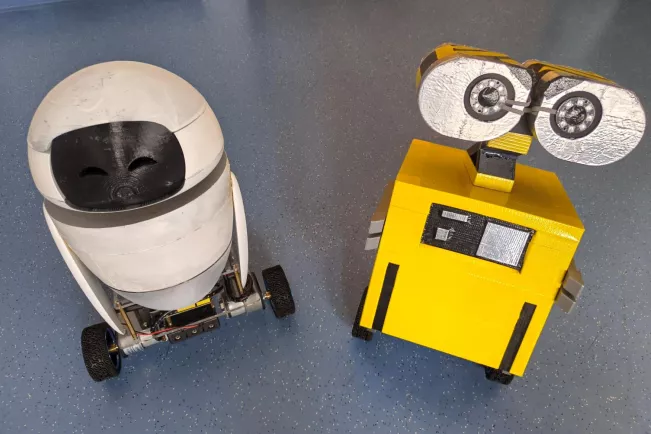
The self-balancing robot is a robot that can balance upright on two wheels with the help of position and motion sensors and motors. It is controlled by a microcontroller that regulates a control loop of sensors and motors. The design of the robot was created by the students themselves and printed on a 3D printer.
The aim of the project is to gain initial practical experience with microcontrollers, sensors and 3D printing.
Contact person: Dr Martin Neumann
Film and photo reference
Still have questions? We are happy to help

Juliane Orth
Communication and Marketing at the Department DEC, Research Assistant, Project Technology - Gender - Journalism, PhD student
Location
Sankt Augustin
Room
B 277
Address
Grantham-Allee 20
53757 Sankt Augustin
Telephone
+49 2241 865 363
Anestis Jordanidis
Public Relations and Marketing Officer in the Department of Engineering and Communication, Project technikjournal.de
Location
Sankt Augustin
Room
B277
Address
Grantham-Allee 20
53757 Sankt Augustin
Contact hours
Wednesdays to Fridays by arrangement
Telephone
+49 2241 865 472The open project day in pictures
Further links